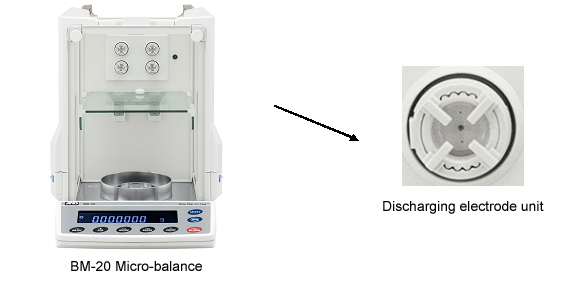Support
Story 11: Solutions Provided by the BM Series Part I: Adding an Anti-static Function
- BM Series
February 9, 2011
Solutions Provided by the BM Series Part I: Adding an Anti-static Function
(Micro Analytical Balances: BM Series)
Naoto Izumo
R&D Division 5, A&D Company, Limited
(Micro Analytical Balances: BM Series)
Naoto Izumo
R&D Division 5, A&D Company, Limited
The BM Series of micro-balances went on sale in December 2010 as A&D's flagship line of analytical balances. The BM Series was considered a flagship line not because they are the only micro-balances made in Japan. We envisioned this series being used for research, development, and analysis in leading-edge fields in Japan. Our development objectives were 1) anti-static countermeasures and 2) the documentation of weighing performance in user environments. The "Development Stories" series will describe in detail how these objectives were met, including the processes used to arrive at the solutions. This installment covers countermeasures for static electricity and the next installment will cover the documentation of weighing performance in user environments.
When we investigated the needs for micro-level weighing during the planning stage of the BM Series, we found that microgram-level measurement is currently required with the following types of samples.
1. Minute amounts of powders in the analysis of pharmaceuticals and food additives
2. Samples placed in plastic containers such as microfuge tubes using micro-pipettes in bio-research and the quantitative analysis of protein
3. Samples placed on drug packing paper in pharmaceutical fields
4. Particulates trapped by filters made of Teflon (PTFE) and similar materials to measure environmental pollutants in the air
5. Minute amounts of liquid ejected from dispensers in production lines for liquid crystals, LEDs, and electronic parts
The use of micro-balances in such applications can be difficult because powders, plastic containers, drug packing paper, and Teflon filters can become electrostatically charged very easily. Additionally, sample weights are usually 10 mg or less, and a minimum display of 0.01 to 0.001 mg, and in some cases 0.0001 mg, is required. For reference, 0.001 mg, or 1 microgram, is one millionth the weight of a paper clip (1 g). Since static electricity can cause weighing errors of several tens of milligrams, it is impossible to weigh at the micro level without first dealing with static electricity.
The minute amounts being measured in the abovementioned micro-level weighing applications require a balance with very acute sensitivity (minimum display) and the effects of electrically-charged samples and containers make it impossible to perform accurate weighing. Micro-balances are also used to measure minute amounts of liquid, powders, and solids in production lines in clean rooms dehumidified to a humidity of 0% to maintain quality. Most clean rooms must be free of dust and metallic contaminates so material such as polyoxymethylene (polyacetal) is frequently used in drive systems to reduce both slide resistance and the release of metallic particles. However, plastic is easily charged in low humidity. For example, vials and other weighing containers can become charged during delivery, which causes unstable weighing and other problems.
To eliminate static electricity, all models of the BM Series are equipped as standard with a direct-current ionizer. Direct-current ionizers generate a large number of ions over a wide area so they do not require a fan to blow the ions, which means that powder samples do not get blown away. What's more, the strong anti-static performance of direct-current ionizers removes static electricity from samples in about 1 second, which means the breeze break door only has to be opened and closed once while eliminating static electricity and weighing the sample. Additionally, the balances are equipped with a dedicated anti-static chamber. Users can place samples here to eliminate static electricity from all samples before weighing. This allows the user to weigh the samples one after another without having to perform static elimination before each weighing. Storing samples before weighing in the anti-static chamber not only removes static but also allows samples to acclimate to the temperature of the weighing chamber. This reduces convective flow, which can be caused by temperature differences of 1 °C or less, and in turn reduces weighing error.
On BM Series models other than the micro-balance models (BM-20/22), the plate that separates the weighing and anti-static chambers inside the breeze break is removable. Removing this plate creates a large weighing chamber that allows users to open a side door of the weighing chamber, pass the sample near the static eliminator at the top of the weighing chamber to remove static electricity, and then place the sample on the weighing pan. In other words, they can remove static electricity from the sample and then weigh it immediately. The ion-generating discharging electrodes (needles) are covered to prevent users from touching them and can be exchanged simply by replacing the unit. This unit configuration provides a level of safety that conforms to the requirements for CE marking and allows users to perform maintenance themselves.

We hope that users aware of the problems of static electricity and researchers who feel their weighing results are unstable in dry winters will effectively use the anti-static function of the BM Series to achieve more stable weighing.